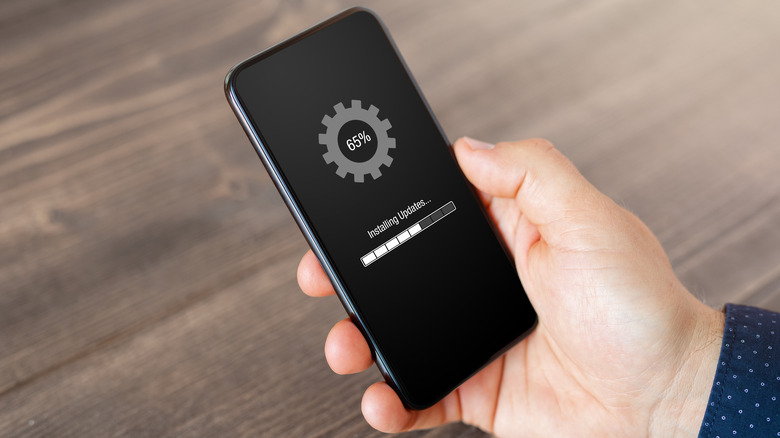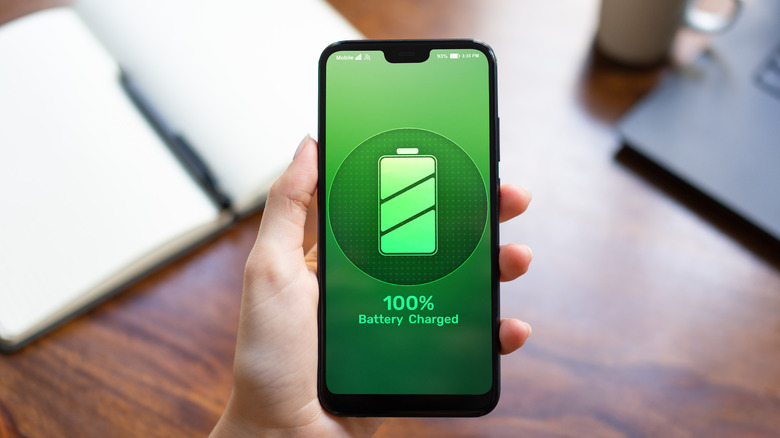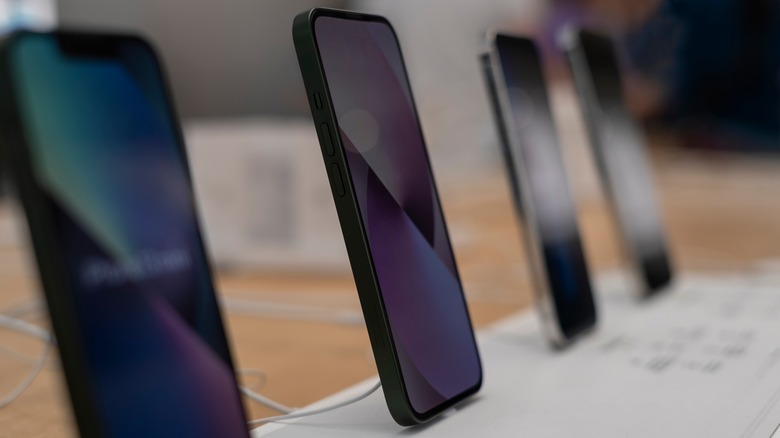5 Mistakes People Make When Buying A New Android Device
Smartphones and tablets are significant investments, so most of us try to do our due diligence before buying one. What that entails depends on the individual consumer but might include reading reviews on reputable websites, checking out the specs on the manufacturer's homepage, or going to a store to try the phone out in person. We do this in hopes of avoiding purchasing one of the worst Android devices ever made. Even with all that research, however, it's hard not to make mistakes. Given the sheer number of Android brands, if you're considering options beyond the top manufacturers, you'll almost certainly suffer from information overload and decision fatigue. Nevertheless, it doesn't have to be that way.
Before throwing in the towel and choosing the first phone or tablet that catches your eye, there are a few things you can do to make sure you get a device that meets your needs. Knowing the right questions to ask, and what you need to look for, can help you avoid making mistakes when buying your next Android device.
Ignoring the reliability of support and software updates
Unless you only plan to keep your Android device for a couple of years, you'll want to pay close attention to how long the manufacturer will support it with updates. That's because a lot of things can go wrong when you don't update your Android phone regularly. Unlike Apple, Google doesn't control the entire Android ecosystem, leaving it up to individual smartphone manufacturers to decide if, when, and for how long a particular device will receive updates. As a result, update policies vary greatly from one manufacturer to another and even between models from the same manufacturer.
Android devices receive two types of updates: OS and security. OS updates for Android are annual major releases that bring new changes to devices, like improvements in usability and design overhauls. On the other hand, security updates are usually released monthly or quarterly and include patches for security vulnerabilities that have been found since the last update. While your phone won't stop working when updates are no longer available, as time passes, you won't be able to get the latest version of apps, and your device won't be protected from the latest exploits and malware, which could put your data at risk. When buying a new Android device, how long the manufacturer offers updates for it can make all the difference between use for only a few years or extended functionality and security for much longer.
Overlooking if the battery life suits your own usage needs
We take our phones with us everywhere we go and count on them having enough power to get us through the day. Nobody wants to be saddled with a phone that requires charging several times a day. That's why paying close attention to battery capacity and your usage needs when considering a new purchase is crucial. While you might think the bigger the phone, the bigger and better the battery, that's not always the case. Larger models often require more battery power because their powerful processors and big screens drain batteries quickly. This makes it important to consider both battery size and how the phone's hardware and features consume power when shopping for a new device.
One strategy you can use to narrow your list is researching the Android phones with the best battery life. You should also check out the phone's mAh rating to get a better idea of how long the battery might last. The higher the mAh rating, the more charge the battery can hold, powering devices longer. However, its real-life performance will depend on the phone's efficiency and the demands you place on it, such as streaming, gaming, or using high-brightness settings.
Prioritizing brand over performance and features
Nobody would argue that brand reputation shouldn't play some role in your decision-making when choosing a smartphone. We all know that brands like Samsung and Google generally deliver reliable, high-quality phones; that's one reason they're so popular. At the same time, you often end up paying for the brand and not the product when you buy these devices.
It's a good idea to look beyond the most recognizable names and consider other major smartphone brands that might not even be on your radar. If you focus only on brand reputation over the actual performance and features of a smartphone or tablet, you could miss out on a device that's better suited to your needs. And a lesser-known brand may offer more bang for your buck, with high specifications at lower price points than the well-known brands. The nice thing about buying an Android device is that there are so many diverse options. There's nothing wrong with brand loyalty, but don't let that stop you from getting the best device.
Assume the after-sales warranty is sufficient
Most of us don't think of our smartphone's warranty until we need it, which is why many of us overlook this important aspect when shopping for a new model. From dropping your phone in water to cracking the screen, a lot can go wrong with your device. If you're careful, you may be able to avoid these things and go several years without needing to get anything repaired. However, if you're like most people, sooner or later, something's going to happen that damages your phone. Most new Android devices come with a one-year manufacturer warranty that covers manufacturer defects only.
If you do anything that causes your phone to stop working, you'll have to pay for it out of your own pocket, and the costs can add up quickly. If you need to repair a cracked screen, you'll be looking at spending over $100 on the low end. Phone insurance has become popular for this reason, and for many people, it's something worth considering.
Buying the cheapest option possible
While there are quite a few budget-friendly Android phones worth checking out, sometimes buying the cheapest model will cost you more than you would've paid for an expensive device in the long run. The least-expensive smartphones only get barebones support, meaning you'll get one, maybe two, major software updates after your purchase. This leaves you without the latest features and can compromise the security of your phone.
Furthermore, at the budget end of the market, manufacturers cut corners in processing power, memory, and storage to keep prices low. With many of these options, it won't be long before you experience slowed-down performance, frequent lag, and inability to handle multitasking. These problems cause devices to age more quickly than even moderately priced versions.
For many of us, our phones are our only cameras. One of the biggest trade-offs when you buy a cheap phone is camera performance. These low-cost models usually lack the advanced camera sensors and features found on more expensive devices, meaning poorer photo and video quality. So, while you may save money upfront on an inexpensive phone, you'll most likely have to replace it a lot sooner.





